Igneocnemis fuligifrons
The Philippine endemic genus Risiocnemis includes 38
described damselfly species, of which 20 are assigned to the subgenus
Igneocnemis. All species of the genus are reophilic forest
damselflies living in habitats with good vegetation
cover. Igneocnemis fuligifrons is found in the Eastern
Visayas and Mindanao including Dinagat and Basilan. In the
Eastern Visayas it shares forest habitats with 4 other
Risiocnemis species on Panaon, Leyte and Biliran. It is not
found on Samar and it was not known from Biliran before my
record in November 2021. This was also the first time
Igneocnemis fuligifrons was photographed alive in the field.
Direct below is posted the first known image of a living
individual photographed undisturbed in its natural habitat.
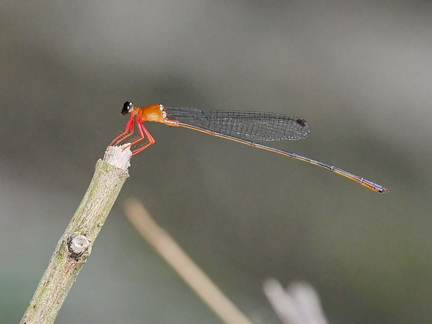
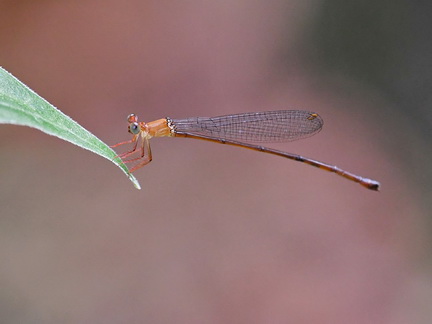
Biliran island, Philippines, 29 November 2021
Biliran island, Philippines, 29 November 2021
-Identification;
Adult males have a characteristic coloration which makes them unmistakable both in the Eastern Visayas and Mindanao. The combination of a black front of the head, orange-brown synthorax brightening in the central lower part, red legs and a brownish abdomen which is clearly darkened dorsally is not seen in any other Igneocnemis species. Also note a contrasting very dark brown to black pterostigma.
Quickly identifying females in the field takes some experience but is possible. In the Eastern Visayas females are most easily confused with Risiocnemis praeusta. For a direct compare see last 2 photos posted lower on this page.
-Habitat;
Small streams and seepage in good forest from near sea-level up to at least 650m asl. Often found in the vicinity of vegetated near-vertical cliffs or rocks. Even though they depend on habitats with flowing water, wanderers may often be found inside the forest some good distance from any stream or seepage.
-Habits;
Perching low at 0,5 to 2 meter off the forest floor. Flight usually very short to the next perch. Once a good spot is found several individuals may be encountered in a small area. Observations confirmed November to June but probably flying year-round.
-Distribution;
Philippines, my records from Biliran are a northward extension of the known range and it further occurs on Leyte and Panaon in the Eastern Visayas (not found on Samar). Also found on western and northern Mindanao, Dinagat and Basilan.
-IUCN Red list status; Near Threatened -Note; In the Eastern Visayas it is scarce throughout with low numbers found in few locations.

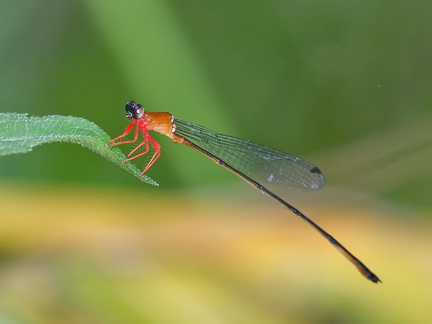
Almeria, Biliran island, March 2022
Cabucgayan, Biliran island, January 2022
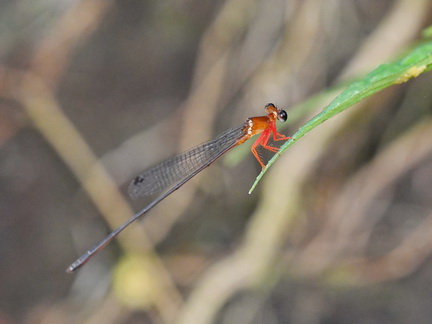
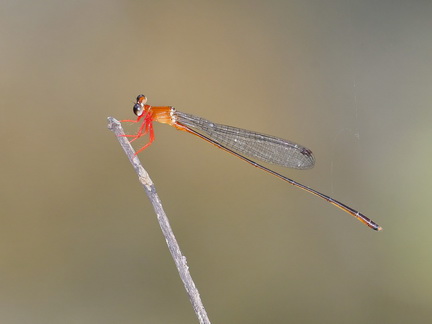
Panaon island, June 2022
Maasin, southern Leyte, June 2022

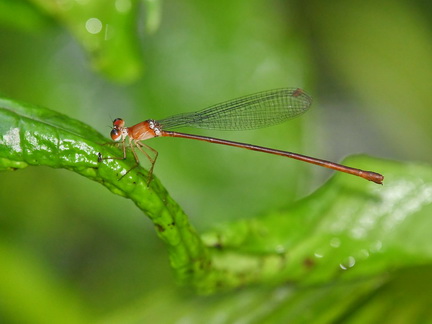
Biliran island, November 2021
Jaro, Leyte, April 2022
All photos copyright Stijn De Win. Note my Dragonfly and Damselfly observations are also posted on iNaturalist.
Hope this page may help with the identification, education, appreciation, conservation and research efforts of the Philippine Odonata.
Contact ; stijndewin@birding2asia.com
Birding2asia.com Home Igneocnemis siniae info page Sangabasis braulitae info page